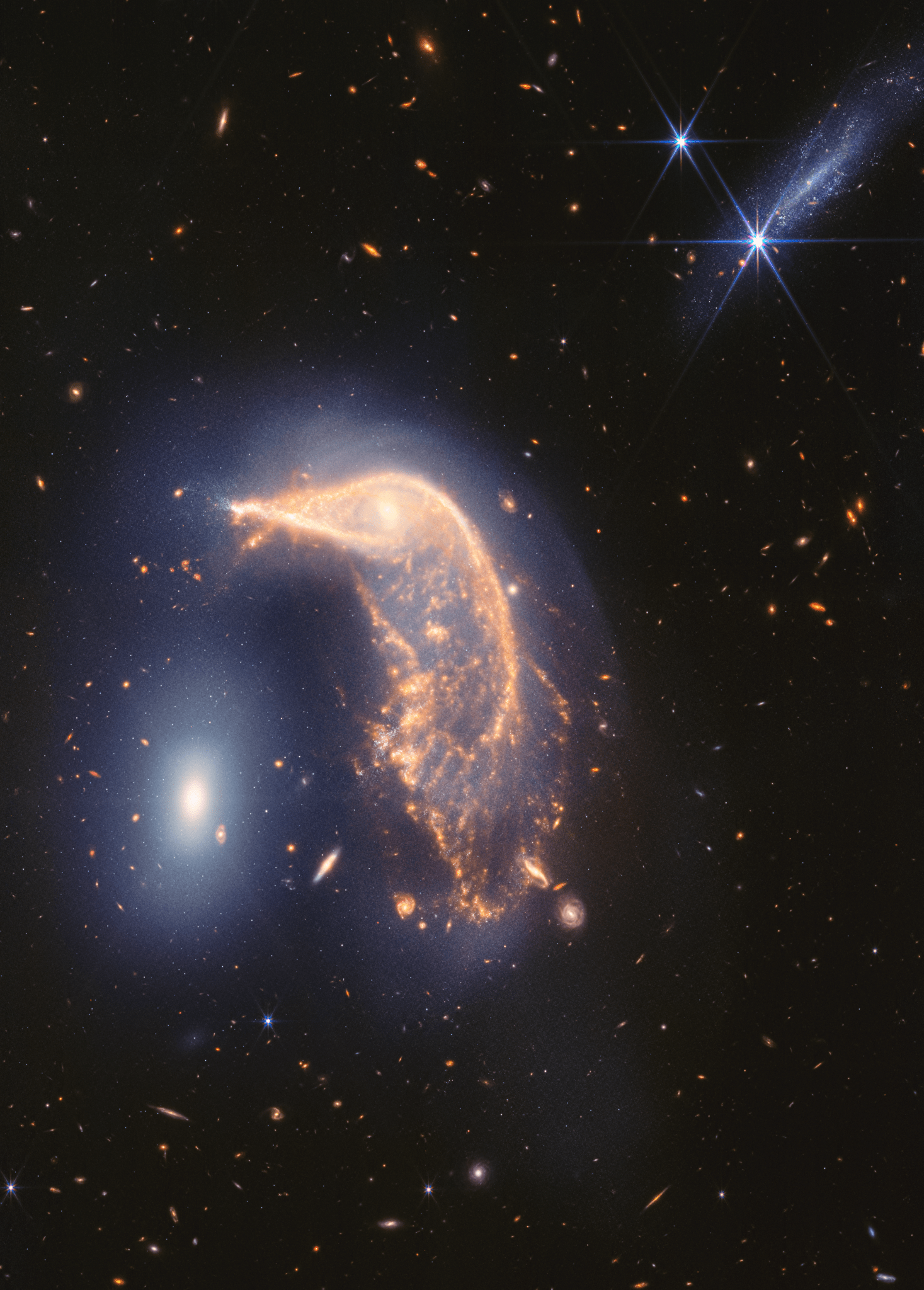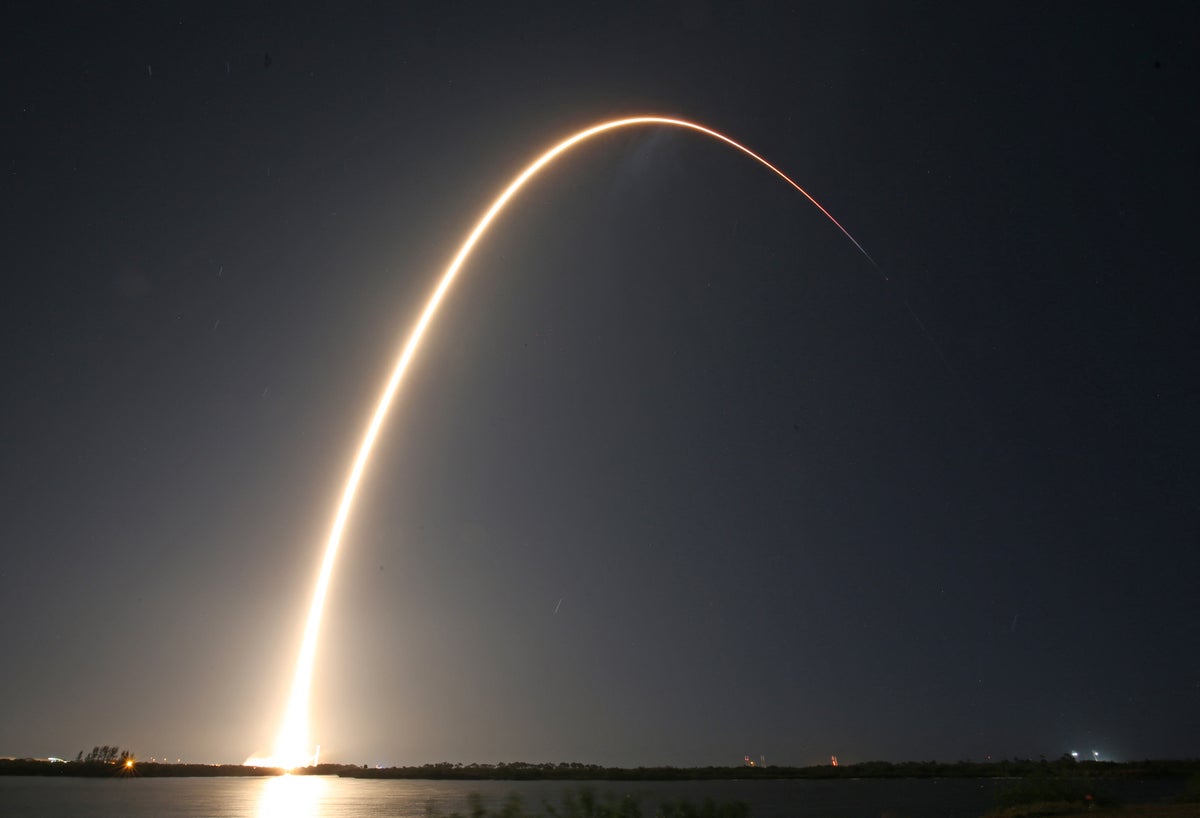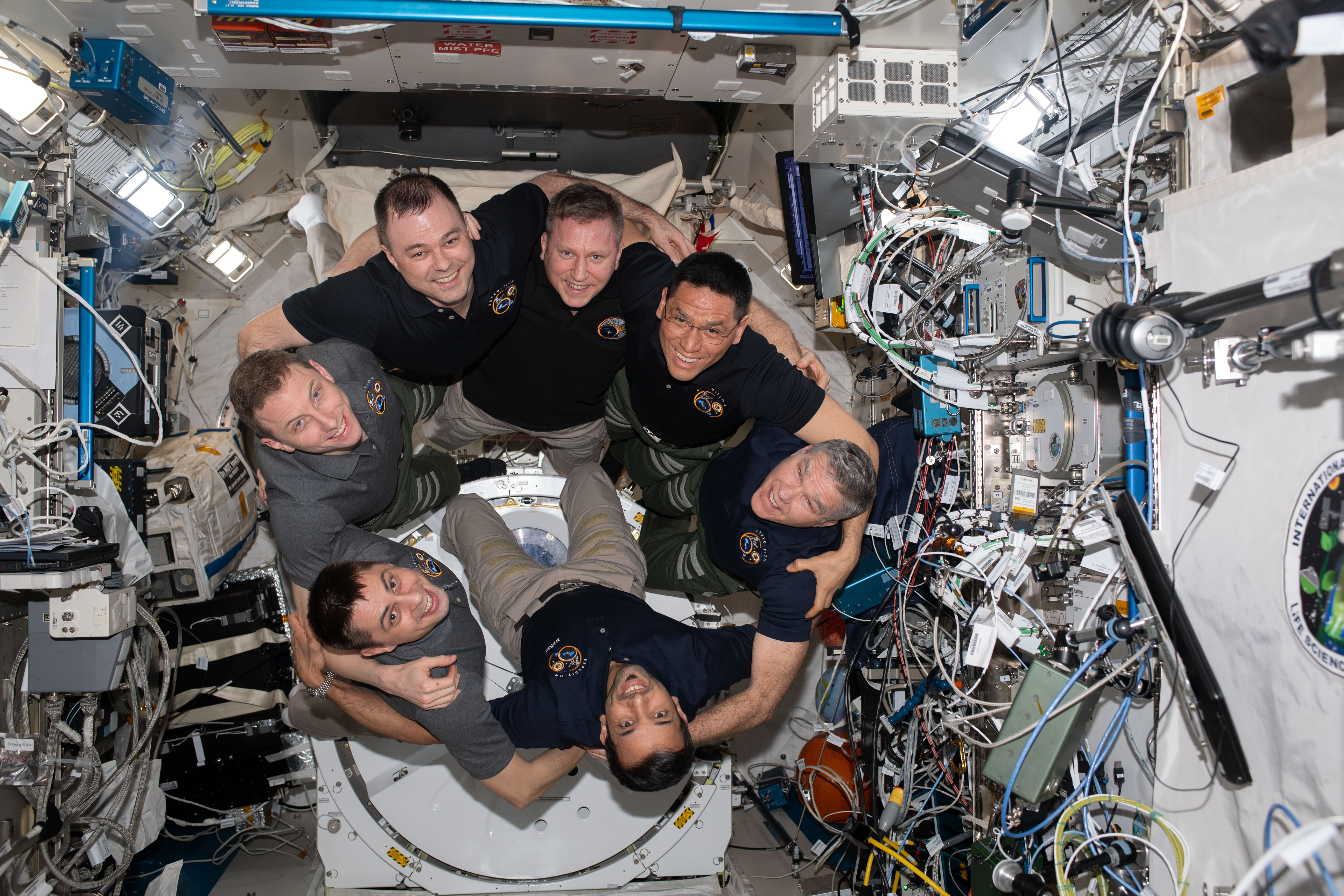Two Years Since Webb’s First Images: Celebrating with the Penguin and the Egg
To celebrate the second science anniversary of NASA’s James Webb Space Telescope, the team has released a near- and mid-infrared image on July 12, 2024, of two interacting galaxies: The Penguin and the Egg. Webb specializes in capturing infrared light – which is beyond what our own eyes can see – allowing us to view and […]


To celebrate the second science anniversary of NASA’s James Webb Space Telescope, the team has released a near- and mid-infrared image on July 12, 2024, of two interacting galaxies: The Penguin and the Egg.
Webb specializes in capturing infrared light – which is beyond what our own eyes can see – allowing us to view and study these two galaxies, collectively known as Arp 142. Their ongoing interaction was set in motion between 25 and 75 million years ago, when the Penguin (individually cataloged as NGC 2936) and the Egg (NGC 2937) completed their first pass. They will go on to shimmy and sway, completing several additional loops before merging into a single galaxy hundreds of millions of years from now.
Learn more about the Penguin and the Egg.
Image Credit: NASA, ESA, CSA, STScI
Text Credit: NASA Webb Mission Team
What's Your Reaction?






































